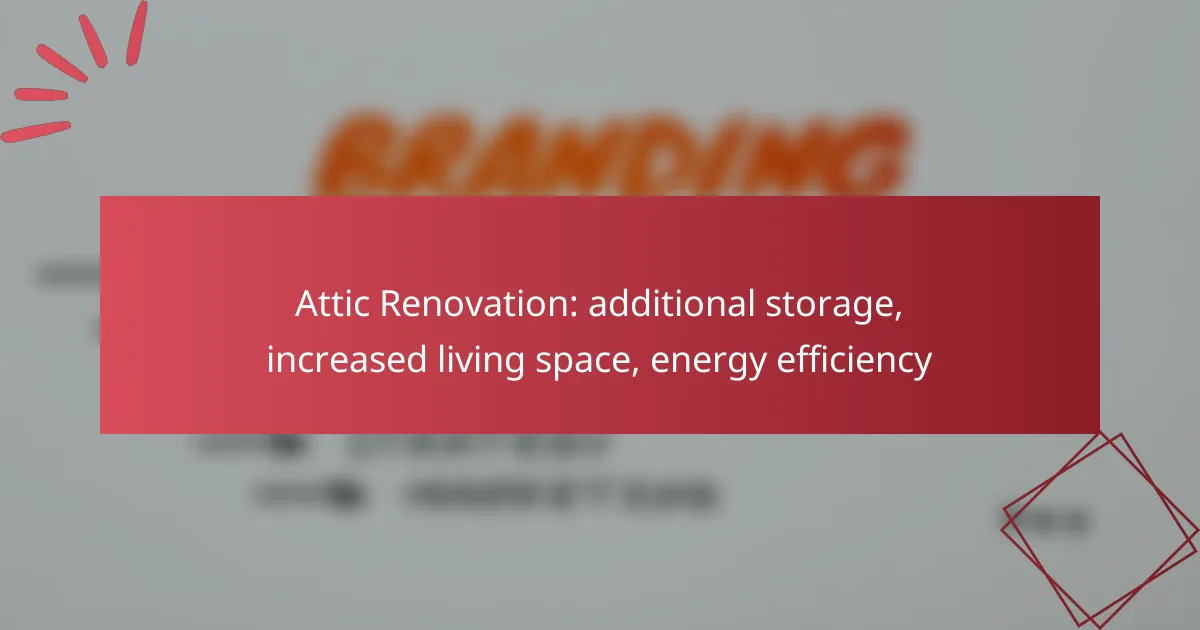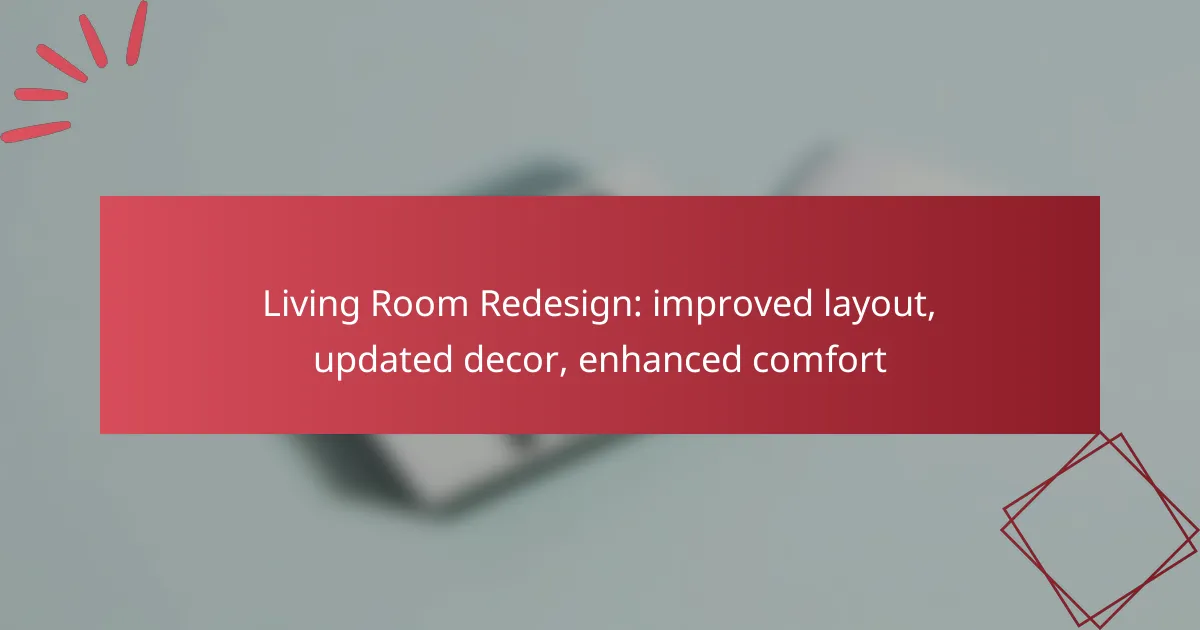Renovating your attic can unlock a wealth of benefits, transforming underutilized space into valuable additional storage and increased living areas. This process not only enhances the functionality of your home but also improves energy efficiency, making it a smart investment for homeowners looking to boost property value and appeal. With careful planning and design, an attic renovation can significantly elevate your living experience.

What are the benefits of attic renovation in urban areas?
Attic renovation in urban areas offers significant advantages, including additional storage, expanded living space, and improved energy efficiency. These benefits can enhance both the functionality and value of a home, making it a worthwhile investment for city dwellers.
Increased storage capacity
Renovating an attic can dramatically boost your home’s storage capacity, which is often limited in urban settings. By transforming the attic into a well-organized storage area, you can efficiently store seasonal items, sports equipment, or rarely used belongings, freeing up valuable space in other parts of your home.
Consider installing built-in shelving or using clear storage bins to maximize the available space. This approach not only keeps items accessible but also helps maintain a tidy environment, which is essential in smaller urban homes.
Enhanced living space
Converting your attic into a livable area can significantly enhance your home’s usable space. This could mean creating a cozy bedroom, a home office, or a recreational room, all of which can be particularly appealing in densely populated urban areas where square footage is at a premium.
When planning this renovation, ensure that you comply with local building codes and zoning regulations, as these can vary widely in urban environments. Proper insulation and ventilation are also crucial to make the space comfortable year-round.
Improved energy efficiency
An attic renovation can lead to better energy efficiency, which is especially beneficial in urban areas where energy costs can be high. By properly insulating the attic, you can reduce heat loss in winter and keep the space cooler in summer, leading to lower energy bills.
Consider using energy-efficient materials and windows during your renovation. This not only enhances comfort but may also qualify you for local energy efficiency rebates or incentives, making the project more financially appealing.

How can attic renovation increase property value?
Renovating an attic can significantly boost property value by transforming unused space into functional areas. This not only enhances the home’s appeal but also makes it more attractive to potential buyers.
Attractive to homebuyers
An updated attic can serve as an additional bedroom, office, or recreational area, making the property more appealing to a wider range of buyers. Many homebuyers prioritize extra living space, and a well-designed attic can fulfill this need without requiring a full home expansion.
Additionally, a renovated attic can showcase modern design trends, such as open layouts and energy-efficient features, which are increasingly sought after. This aesthetic and functional upgrade can create a lasting impression during home viewings.
Higher resale prices
Investing in attic renovations can lead to higher resale prices, often yielding returns that exceed the initial investment. Homeowners can expect to recoup a significant portion of their renovation costs, particularly if the attic is converted into a desirable living space.
For instance, in many markets, a well-finished attic can increase the property value by tens of thousands of dollars. It’s essential to consider local real estate trends and consult with professionals to ensure the renovation aligns with buyer expectations and market demands.

What are the key steps in planning an attic renovation?
Planning an attic renovation involves several crucial steps to ensure the project enhances storage, living space, and energy efficiency. Key considerations include assessing structural integrity, designing an effective layout, and choosing appropriate materials.
Assessing structural integrity
Before starting an attic renovation, it’s essential to evaluate the structural integrity of the space. This involves checking the condition of beams, joists, and the roof to ensure they can support additional weight and modifications.
Consider hiring a structural engineer to conduct a thorough inspection. They can identify any weaknesses or necessary reinforcements, which may add to your budget but are crucial for safety and longevity.
Designing the layout
Designing the layout of your renovated attic is vital for maximizing space and functionality. Think about how you plan to use the area, whether for storage, a bedroom, or a home office, and create a floor plan that accommodates these needs.
Incorporate features like built-in storage solutions or skylights to enhance usability and natural light. Ensure that the design complies with local building codes, which may dictate ceiling heights and egress requirements.
Choosing materials
Selecting the right materials can significantly impact the energy efficiency and aesthetics of your attic renovation. Opt for insulation materials that meet or exceed local energy codes to minimize heating and cooling costs.
Consider durable flooring options that can withstand the unique conditions of an attic, such as moisture-resistant materials. Additionally, choose finishes that align with your overall home style while providing long-term value.

What are the costs associated with attic renovation?
The costs of attic renovation can vary significantly based on factors such as location, scope of work, and materials used. Homeowners can expect to spend anywhere from several thousand to tens of thousands of dollars depending on the complexity of the project and the desired outcomes.
Average renovation costs in major cities
In major cities, attic renovation costs can range widely. For example, in New York City, homeowners might pay between $30,000 and $70,000, while in Los Angeles, costs could range from $25,000 to $60,000. These figures often reflect higher labor costs and demand for skilled tradespeople.
In smaller cities, the costs may be lower, typically falling between $15,000 and $40,000. It’s essential to obtain multiple quotes from contractors to find the best price and ensure quality work.
Cost breakdown by materials
The materials chosen for an attic renovation significantly impact overall costs. Basic insulation can cost around $1 to $2 per square foot, while high-quality options may reach $3 to $5 per square foot. Flooring materials, such as laminate or carpet, can range from $2 to $10 per square foot depending on quality.
Additionally, if structural changes are necessary, such as reinforcing beams or adding windows, these can add several thousand dollars to the total cost. Planning ahead and selecting materials wisely can help manage expenses effectively.
Potential return on investment
Attic renovations can offer a solid return on investment (ROI), often recouping 70% to 80% of the costs upon resale. This is particularly true in markets where additional living space is in high demand.
To maximize ROI, focus on creating functional spaces that appeal to buyers, such as bedrooms or home offices. Avoid over-customizing, as this can limit the appeal to potential future owners.

What permits are required for attic renovation?
Attic renovation typically requires several permits to ensure compliance with local building codes and safety regulations. The specific permits needed can vary by location, but generally include building permits and may also involve electrical and plumbing permits.
Building permits
Building permits are essential for any structural changes made during an attic renovation. These permits ensure that the work complies with local zoning laws, safety codes, and construction standards. Homeowners should check with their local building department to understand the specific requirements and fees associated with obtaining a building permit.
In many areas, the process involves submitting detailed plans of the proposed renovation, which may include architectural drawings and specifications. It’s advisable to allow several weeks for the permit approval process, as this can vary significantly depending on the jurisdiction.
Electrical and plumbing permits
If your attic renovation includes adding electrical wiring or plumbing fixtures, you will likely need separate electrical and plumbing permits. These permits ensure that all installations meet safety standards and are performed by qualified professionals. Local regulations often require that licensed electricians and plumbers carry out the work.
Before starting any electrical or plumbing work, consult your local building authority to determine the specific requirements and potential inspection processes. Failing to obtain these permits can lead to costly fines and may complicate future property sales.

How to choose a contractor for attic renovation?
Choosing a contractor for attic renovation involves assessing their qualifications, experience, and customer feedback. A well-selected contractor can enhance your attic’s functionality while ensuring quality workmanship and adherence to local building codes.
Evaluating contractor experience
When evaluating a contractor’s experience, consider how long they have been in the attic renovation business and their familiarity with local regulations. Look for contractors who specialize in attic spaces, as they will have a deeper understanding of the unique challenges and requirements involved.
Ask potential contractors about their previous projects, specifically those similar to your planned renovation. A portfolio showcasing completed attic renovations can provide insight into their style and quality of work.
Checking references and reviews
Checking references and online reviews is crucial in selecting a reliable contractor. Request a list of past clients and contact them to inquire about their experiences, focusing on the contractor’s communication, timeliness, and overall satisfaction with the work.
Additionally, explore online platforms for reviews, such as Google or local home improvement websites. Look for consistent feedback regarding the contractor’s reliability and quality, and be wary of contractors with numerous negative reviews or unresolved complaints.

What design styles are popular for renovated attics?
Popular design styles for renovated attics include modern minimalist and rustic farmhouse. Each style offers unique aesthetics and practical considerations that can enhance the functionality and appeal of your attic space.
Modern minimalist
The modern minimalist style emphasizes simplicity and functionality, making it ideal for maximizing space in a renovated attic. This design often features clean lines, neutral color palettes, and minimal furnishings, creating an open and airy atmosphere.
When adopting a modern minimalist approach, focus on decluttering and selecting essential furniture pieces that serve multiple purposes. For instance, consider built-in storage solutions or furniture that can be easily folded away when not in use. This style works well with large windows to invite natural light, enhancing the sense of space.
Rustic farmhouse
The rustic farmhouse style brings warmth and charm to attic renovations, often incorporating natural materials like wood and stone. This design creates a cozy environment, perfect for a guest room, home office, or reading nook.
To achieve a rustic farmhouse look, consider exposed beams, reclaimed wood accents, and vintage decor. Soft, earthy color tones and comfortable textiles, such as cotton or linen, can enhance the inviting feel. Additionally, integrating open shelving can provide both storage and display space for personal items, adding character to the room.



